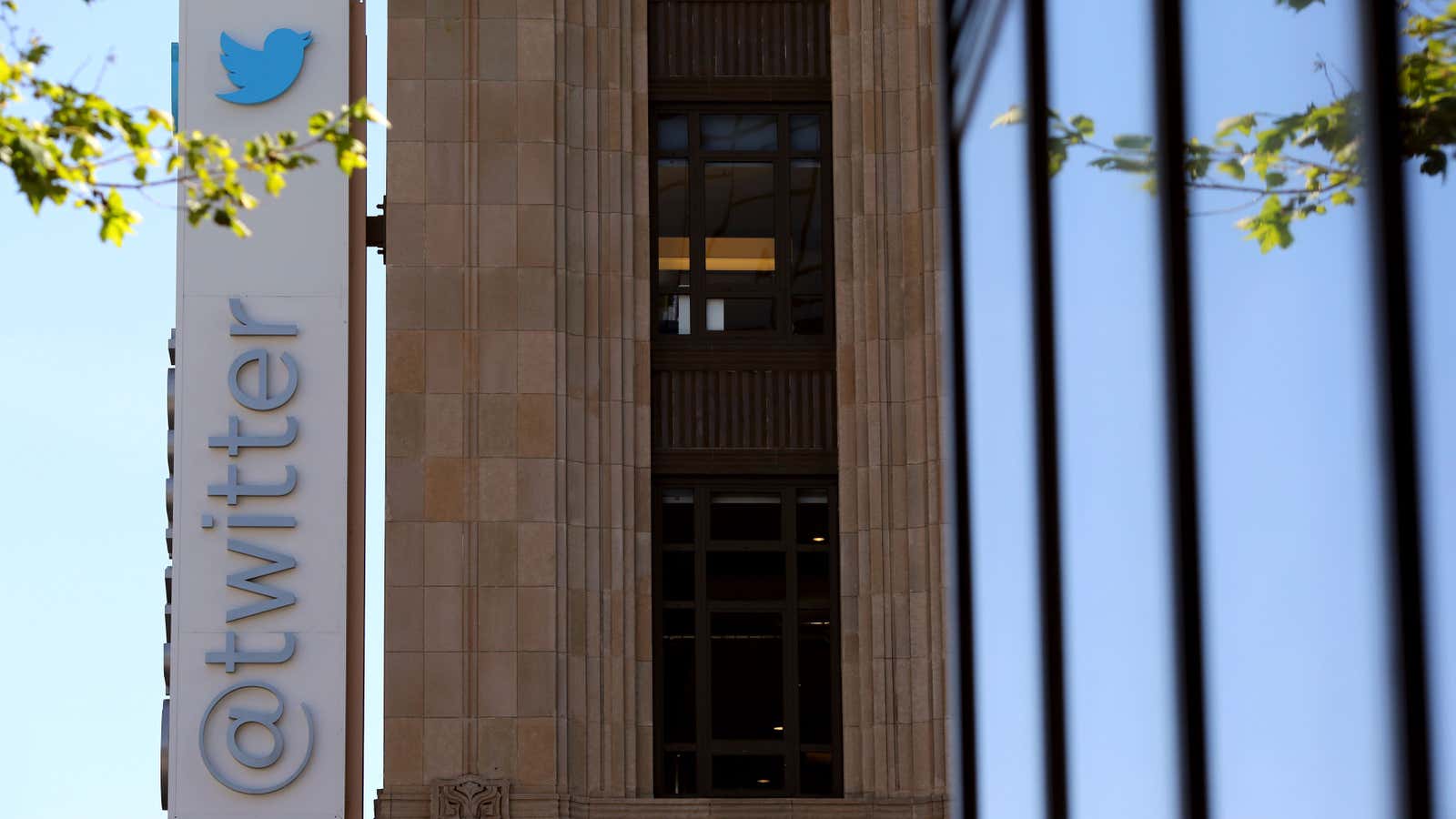Two weeks ago, Twitter made a big decision: out with the stars, in with the hearts.
For the company, which has been struggling to appeal to a more mainstream audience, it seemed that letting people express their feelings toward a tweet with a heart—which, similar to Facebook’s ubiquitous thumbs up icon, means “like”—just made more sense than stars, which used to mean “fav.”
Taking another page from Facebook’s book, it appears Twitter is now testing the option to let users respond with the emoji of their choosing. Some users have reported being able to pick from an expanded emoji set, including 😜, 🎉, 💯, and of course 💩.
A Twitter representative sent Quartz the following statement regarding the test: 🙊
Facebook spent years debating whether or not to supplement its like button. In October, the company finally added six emoji buttons, with the hopes of letting users express themselves more widely. As the company had discovered, there are many instances when people don’t like the stories they hit “like” on. Often, users impulsively hit the thumbs up icon to foster a connection with the person who posted. While the like button did cultivate positivity, it was an inappropriate response to tragic or sad news.
Twitter, which has become a crucial source for breaking news, is learning Facebook’s lesson as well. The recent Paris attacks is a perfect example of when “like” isn’t an appropriate emotional response.
But as TechCrunch points out, Twitter’s been on a quest to simplify its service—it’s the motivation behind the seemingly insignificant change from stars to hearts—and an expanded set of emoji responses could serve to complicate a service that most people already find convoluted.
